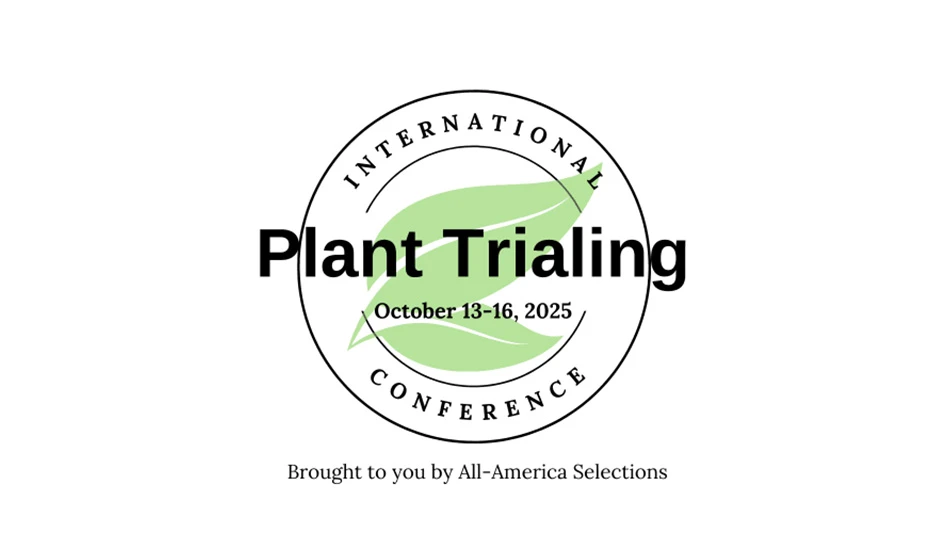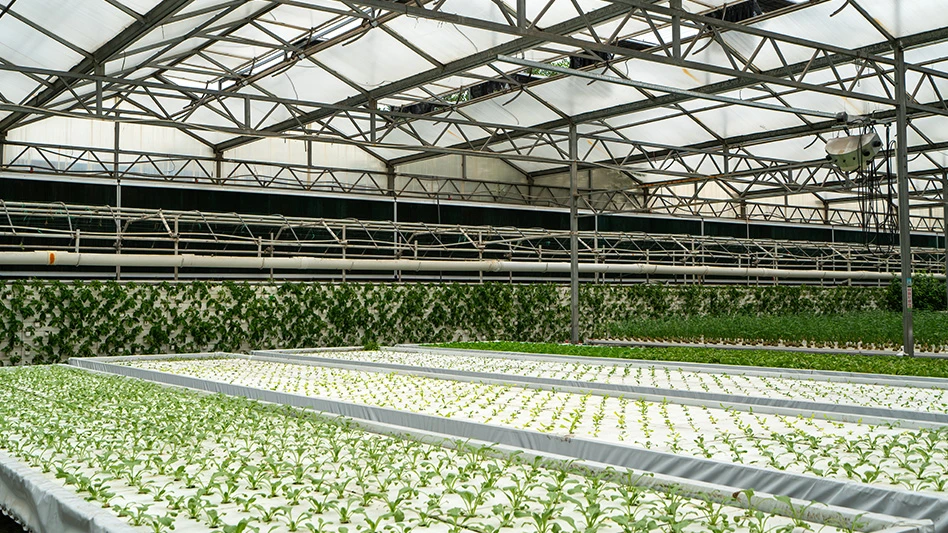Supplemental lighting is often used in geographical areas and during seasons where solar radiation is not optimal to grow crops. Growers like to know when supplemental lighting is economically feasible. There are some quick calculations that can be done to partially answer that question.
In order to estimate the cost of running the lights, we need to do a series of calculations.
As a rule of thumb, for most greenhouse crops, a 1-percent increase on the daily light integral (DLI) converts to a 1-percent increase in production. The DLI is defined as the total amount of radiation (PAR: 400 to 700 nm) falling on a 1-meter square area throughout one entire day (moles per meter square per day: mol m-2 d-1). This number can be measured using a quantum meter. If such values are not available, see Box 1 to estimate from near-by weather station data.
First, calculate your average solar DLI for a determined time (month, season) using your greenhouse quantum data. Commercial greenhouses are often equipped with a quantum sensor that measures the amount of photosynthetic photon flux (PPF) in the photosynthetic active radiation (PAR: 400 to 700 nm) range. The units are in µmol m-2 s-1. PPF is defined as the amount of light photons (µmol) falling in a one-meter square (m-2) area every second (s-1). The DLI is then obtained when PPF is integrated for an entire day (mol m-2 d-1).
The second piece of information is the desired amount of electrical supplemental lighting (PPF in µmol m-2 s-1) provided by electrical lighting. A typical range is between 50 and 100 µmol m-2 s-1 in commercial greenhouses. With the desired supplemental PPF and the number of hours the supplemental lights are on, we can calculate the supplemental DLI.
supplemental DLI
=supplmental PPF × 0.0036 × hours the lights are ON per day
The third piece of information is the number of fixtures needed per meter-square to provide the desired PPF.
To calculate number of fixtures, we need fixture specific information.
1) The fixture efficiency (µmol J-1 or µmol W-1 s-1) defined as the number of light photons (µmol) in the range of PAR coming out of the fixture every second (s) per every watt of electrical power (W). Any reputable horticultural fixture shows that value on the specification sheet and it ranges between 0.84 to 2.3 µmol W-1 s-1[1].
2) The total power to operate the fixture in watts is obtained by this modified formula [1].
Number of fixtures per m2=
(desired light intensity(PPF))
(fixture efficiency ×Watts to power the fixture)
After calculating the number of fixtures needed per m2, we would use that number to calculate the power consumption to run the fixtures per month:
power kWh per m2 = Number of fixtures per m2 × kW to power fixture × hours the fixtures are ON per day × 30 days
This will give you the total amount of kWh to power the fixtures per every meter square of growing area. You can now calculate the monthly electricity cost:
Monthly electricity cost per m2= power kWh per m2 × cost per kwh
If English units are preferred:
Monthly electricity cost per sq ft2
=(power kWh per m2 ÷ 10.76 ) × $ per kwh
The final pieces of information are the yield per a given area (m2 or ft2) and the increase percent in production based on DLI increase. Let’s put everything into perspective with an example.
Putting it together
This is example is based on a North Carolina greenhouse lettuce grower.
Required information
- Average inside greenhouse solar DLI in the months of November, December and January: = 10
- Fixture efficiency: 1.9 µmol J-1 or µmol W-1 s-1
- Fixture power: 1000W or 1kW
- Desired supplemental intensity PPF: 50 µmol m-2 s-1
- Number of hours with electrical lights ON: 18
- Average lettuce yield for the months of November, December and January: 858 lbs / 8 oz per head=1,716 heads
- Total growing area ft2: 2,700
- kWh electricity cost: $0.10
Calculated information
- Supplemental DLI: 50 µmol m(-2) s(-1) × 0.0036 × 18 h = 3.24 mol m-2 d-1
- Number of fixtures per m2: (50 µmol m(-2) s(-1)) ((1.9 µmol W(-1) s(-1) ×1000W)) = 0.0263
- Power kWh per m2: 0.0263 fixtures × (1000 W ÷ 1000) × 18h × 30 days: = 14.21
- Monthly electricity cost per growing area: 14.202 kWh ÷ 10.76 × 2700 ft2 × $0.10 = $356.60
The December DLI can be increased from 10 mol m-2 d-1 to 13.24 mol m-2 d-1 by using the supplemental lighting. This equates to a 32.4 percent increase in production [(Greenhouse solar DLI + supplemental DLI) ÷ Greenhouse solar DLI]. This grower will increase production by 278 lbs of lettuce [current lettuce yield × 0.324] that will equate to 556 heads [(278 lbs × 16 oz per lb)÷ 8 oz average lettuce weight] at a wholesale price of $ 1.80 per head for a total of $1,001.
The increase in revenue for that month is: $1001 – $356.6 (Monthly electricity cost per growing area) = $644
That example is specific to lettuce greenhouse production, but the same formulas and calculations can be used for other greenhouse crops, including ornamentals. There were some assumptions made for the described calculations. For example, we are assuming that all the photons produced by the lamps are falling onto the crop. We are also not taking into consideration the degradation of the fixture with time and the reflective specifications. In other words, the above ‘back-of-the-envelope’ calculations are a best-case scenario and more detailed calculations should be made before making any decisions for the adoption of supplemental lighting.
References
[1] Aldrich, R.A., and Bartok, J.W. (1994). Greenhouse Engineering, Vol 33 (Ithaca, NY.: NRAES-Natural Resources, Agriculture, and Engineering Service).
[2] Thimijan, R.W., and Heins, R.D. (1983). Photometric, Radiometric, and Quantum Light Units of Measure: A review of Procedires for Interconversion. Horticultural Science 18.

Explore the January 2016 Issue
Check out more from this issue and find your next story to read.
Latest from Greenhouse Management
- Hurricane Helene: Florida agricultural production losses top $40M, UF economists estimate
- No shelter!
- Sensaphone releases weatherproof enclosures for WSG30 remote monitoring system, wireless sensors
- Profile Growing Solutions hires regional sales manager
- Cultural controls
- University of Maryland graduate student receives 2024 Carville M. Akehurst Memorial Scholarship
- Applications open for Horticultural Research Institute Leadership Academy Class of 2026
- Meeting the challenge of pest management





